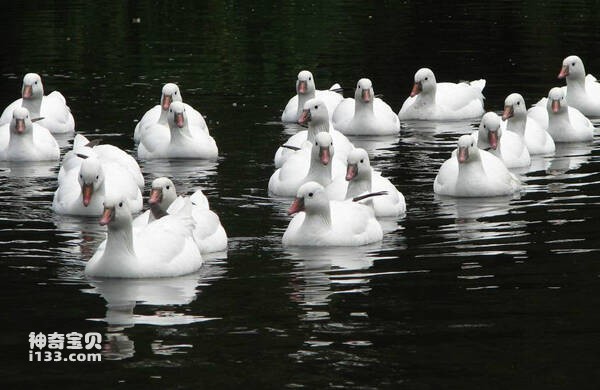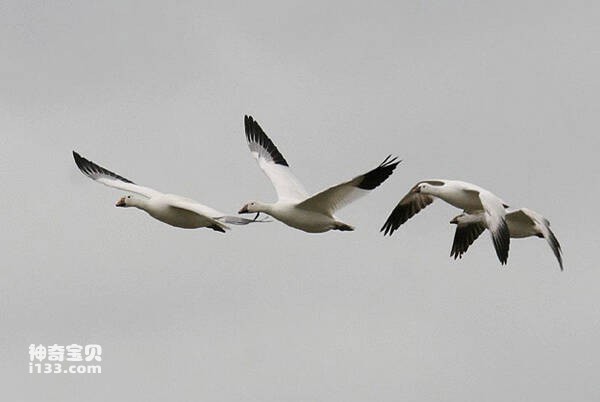Anser rossii
IUCN
LCBasic Information
Scientific classification
- name:Anser rossii
- Scientific Name:Anser rossii,Chen rossii,Ross’s Goose
- Outline:Waterfowl
- Family:
Vital signs
- length:57-64cm
- Weight:860-2040g
- lifetime:No textual research information is available
Feature
The fine bill goose is similar to the snow goose, but is much smaller, and its beak base has no black lines like that of the emperor goose
Distribution and Habitat
It is found in North America, including the United States, Canada, Greenland, Bermuda, Saint Pierre and Miquelon, and in Mexico in the transition zone between North and Central America.
Depending on the season and the environment, fine billed geese are found in tundra, coastal plains and the Big Island. Wintering in meadow areas. Migrating in autumn, it is found in plains, rice fields and harvest fields. They nest mainly in the Northwest Territories of Canada, or in other parts of the Arctic, especially on Southampton Island and along the McConnell River, where the Hudson River flows into the estuary. Wintering almost entirely in the Sacramento canyons of California. The winter range is more extensive, and its migration patterns have changed greatly due to changes in farming. Some of the roads borrowed by the goose are through Oregon and northwestern Montana, then as far south as New Mexico and northern Mexico. Some fine bill geese may still follow along the Mississippi Valley, regu
Appearance
Slender bill geese are 57-64 cm long, have a wingspan of 114 cm, and weigh 860-2040 grams. It belongs to the snow goose series. Fine bill geese are somewhat similar to snow geese. But it is much smaller, and its beak base has no black lines like that of the emperor goose. The head is smaller and rounder, and the neck is strong and thick. Thin bill geese have higher wings than snow geese. As with snow geese, the head is often dyed and has a water red color. The body feathers are pure white, and the wings have black wingtips. The mouth is dark pink, which makes the mark more distinct. The area of blue warts at the base of the beak is more or less extensive, and the legs and feet are pink. Iris dark brown. The feathers of the young geese are different from those of the small snow geese, and are all white except for a small gray mark on the neck and shoulders. The legs are green and gray, turning pink after the first winter.
Blue phase is rare in fine bill geese (very few of them are bl
Details
Anser rossii is Ross's Goose, no subspecies.

Fine bill geese are completely vegetarian and forage for seeds and shoots in the fields. It mainly feeds on plant food such as young leaves, buds, stems, fruits, seeds, roots of aquatic plants, tubers, reed buds and grasses. In winter, they often go to the fields to forage for grain, rice and crop seedlings. Its hard beak is well suited for digging into the roots of underground plants, so it feeds mainly on plants. In the Arctic, it feeds mainly on the roots of different plants, cultivated corn seeds, weeds, and equitaria. In the wintering area, the main food is grains and shoots of crops.

The nesting area of the fine bill goose overlaps slightly with that of the snow goose. But the two species don't usually mix. Mating begins upon arrival in mid-May. Nesting began shortly thereafter. Goose nests are built on islands or tundra, often hidden behind small bushes or rocks. Females usually lay four to six eggs per nest.
Listed on the International Union for Conservation of Nature (IUCN) 2012 Red List of Threatened Species ver 3.1 - Low Risk (LC).
Protect wild animals and eliminate wild meat.
Maintaining ecological balance is everyone's responsibility!








